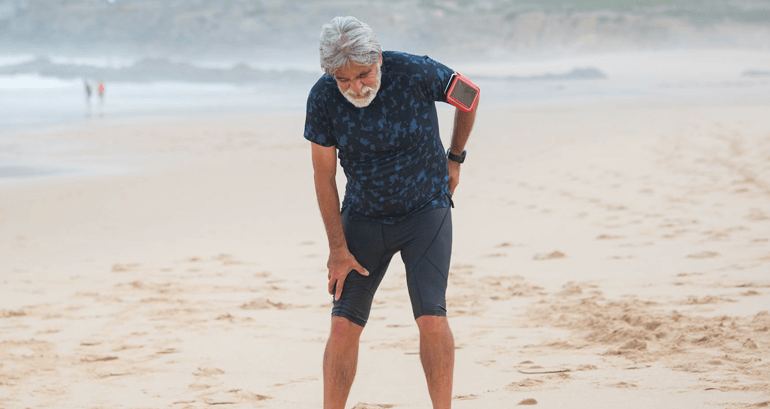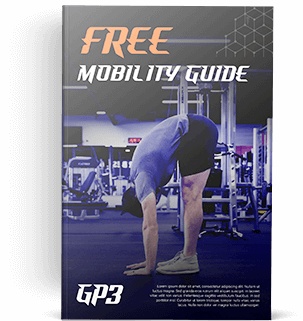Key Points:
1. We think of pain as far too normal, particularly as we age.
2. At its core, pain is a message from the brain and nervous system.
3. The brain’s job is to keep us alive long enough to reproduce, and pain is one way it tells us that this job is under threat.
Estimated reading time: 5-10 minutes
Listen to this article on Spotify!
What is pain? French bread! If you appreciated that reference, we’ll get along great. If not, I forgive you, but it wouldn’t hurt to give Remember The Titans another view. I’m also planning on rewatching it soon, through one particular lens. I want to see if my perception of Coach Boone has changed.
As I’ve gotten older, I’ve wondered why we glorify coaching styles that flirt with and even cross the line into abusive. Until I enjoyed the benefit of a few years’ worth of hindsight, I didn’t realize that a significant portion of my formative years was spent having obscenities shouted in my general direction by coaches and other authority figures. For now, I’m not going to dive into the debate of whether or not this works as a motivational tool, or discuss the various pros and cons of such an approach. Perhaps in a future post.
Instead, I’d like to focus on how unremarkable it felt at the time, especially after the initial shocks wore off. Verbal abuse is accepted and even encouraged in the circles of competitive sports…but let’s be clear.
It’s not normal.
Even if one wants to take the position that it’s typical or even beneficial in the context of youth athletics, I think few people would argue that being subjected to this type of talk is healthy in school, work, familial, friendship, and romantic scenarios. But in the moment, it can feel completely normal.
And you know what else is like that? Pain.
Collectively, we have way too high of a tolerance for pain. A 2022 research paper found that over 50 million U.S. adults report being in pain daily, with the back, hips, knees, and feet the most common areas. And this is only adults who say they’re in pain every day! If we expanded this to every week or every month, I imagine the statistics would look even more dire.
In response, we say things like, “Well, I’m not as young as I once was.” Nope! I reject that. Easy for me to say in my early thirties, right? Maybe. However, noted mobility guru and Doctor of Physical Therapy, Kelly Starrett, claims that our joints can last 110-120 years with proper maintenance. While the modern Western lifestyle certainly isn’t conducive to such an outcome, we undeniably have been conditioned to see pain as normal.
But, I think we misunderstand what pain is. We treat it as an inconvenience, something to be “gotten rid of.” With this mindset, we seek solutions that don’t address the underlying cause of pain, but simply mask it.
Painkillers, cortisone injections, alcohol, you name it. We’ll try almost anything that promises to be a quick fix for pain. What we don’t do as often is try to deeply understand where it’s coming from, why it’s present, and how we might fix the root issue.
But, to echo this piece’s title, just what the heck is pain?
Pain is two things, primarily.
- It is sensation.
- It is a message from our nervous system.
First, the actual experience of pain is sensations of varying intensities. Beyond that, it’s difficult to describe. We ascribe labels like sharp, stabbing, burning, dull, aching, shooting, heavy, throbbing, splitting, tender, or nauseating. But, those words don’t really mean anything, do they?
To illustrate, try describing a “dull ache” to a highly active 10-year-old who’s never experienced such a pain for themselves. They won’t have any idea what you mean.
So, as simple as this may sound, pain is just…sensations. It’s little more than an awareness of tingling vibrations of different strength, roughly localized in specific parts of our body.
At the risk of getting too metaphysical here, is it even possible to draw a line around where the pain starts and stops? We can certainly point to the spot where it hurts, but the awareness of these vibrations sort of melds into the regular sensation of a knee, back, or shoulder, for example.
Ironically, it’s when we try to “get rid of” these sensations that they often get worse. This is far easier said than done, but in the actual moment of experiencing a non-dangerous pain, we’re better served by leaning in and fully experiencing it. Counterintuitively, this acceptance of the pain can lessen the subjective intensity of it. Now, if you try to accept pain with the intention of making it go away rather than fully experiencing it, this won’t work.
The difference is subtle but important. And if you’ve ever tried a cold plunge, you know what I’m talking about.
At some point during the first five to ten seconds, you’ll feel absolutely miserable. The cold will be suffocating, and your nervous system will respond with alarm. But, if you take a few deep breaths and let your body acclimate, it won’t seem as bad. The sensation of cold will still be there. No question. But it will no longer be a problem. Pain can be like that, too.
Let’s get concrete.
Perhaps that last section was a little bit too “woo” for you. Fair enough. So, to be more objective, we can say this with certainty:
Pain is a message from our brain and nervous system that a threat has been detected.
We must understand that the job of the brain and nervous system is to keep the bodymind alive. Its evolutionary purpose was and still is to survive long enough to reproduce and pass on its genetic material. So, the brain is constantly scanning the environment for threats that could prevent it from fulfilling this goal.
This explains why the brain’s threat response is oversensitive. You can likely fully recover from being spooked by your own shadow a near-infinite number of times. But…mistake a predator for your shadow one time? Game over.
Thus, from the brain’s standpoint, it’s much safer to be hypervigilant.
With this in mind, we can surmise that the sensation of pain is a message from the brain saying, “Hey, there’s something here that reduces our chances of passing on our genes. Let’s change that.”
Here’s an easy example–accidentally putting your hand down on a hot stovetop. In this case, the message couldn’t be more clear. “That thing you’re touching will cause severe, irreversible damage if you don’t get away from it! MOVE NOW!” So, we do. This message is damn near impossible to ignore, and the motor response happens automatically and instantly.
It should go without saying, but the above example is absolutely NOT one in which you should lean in and fully experience the sensation. Not unless you want third degree burns and permanently fried nerve endings. The same goes for instances like continuing to run during a basketball game if you’ve clearly sprained your ankle. Please don’t do that.
But, what about something less obvious, like joint or muscle pain?
What triggers aches and pains?
Typically, when it comes to muscle, connective tissue, and bone, pain is caused by the brain perceiving threat related to any combination of the following:
- Position
- Load
- Speed
Let’s say you’re not dealing with an acute injury, but you’re prone to knee pain. Squat past a 90-degree angle with a bar on your back, and all of a sudden, you feel a sharp, stabbing sensation below the kneecaps. Your brain is telling you that it perceives doing this as unsafe.
Multiple factors influence this assessment. Perhaps lying on your back and having someone push your knees into full flexion is completely pain-free. Maybe even squatting past 90 degrees with only your bodyweight is totally fine. Or, it could be that if you cut your speed in half when squatting with weight, you feel less pain, but moving full-speed is a no-go. Each factor–position, load, and speed, plays a part.
Let’s examine this example from the brain’s perspective.
Back in the hunter-gatherer days, if you suffered a severe knee injury like a torn meniscus, you were probably dead. You wouldn’t be able to hunt, outrun predators, or keep up with your tribe. To prevent such an outcome, the brain has specialized cells called proprioceptors within muscle, tendon, ligaments, and bone that tell it exactly how much force it perceives the tissue can currently handle.
When we approach that limit, the brain starts sending the pain signal, because if we exceed it, severe injury can happen. So, when you feel pain with different movements, loads, or speeds, that’s your brain telling you it perceives that what you’re doing has the potential to negatively affect your ability to pass on your genes.
And when it says this, we’re best served by listening.
Now, I want to stress here that this happens completely below the level of our conscious control. I do worry that when I write about this topic, some people will hear, “Your pain is all in your head.” If you’ve read my previous piece, “Is it all in your head?” you’ll know that’s not what I mean at all. For those who haven’t checked that one out, suffice it to say that the mind and body aren’t actually two things, and you can’t separate them.
So in this case, saying that your brain is sending you a pain signal based on a particular set of stimuli is in no way saying that your pain isn’t real or that you’re making it up. I can’t stress that enough. Your pain is real. And it sucks.
So, now to the question you’ve all been waiting for…
What can we do about this?
At the risk of being an annoying clickbait writer, I’m going to make you wait until next week. I want to give this matter the time and attention it deserves. To that end, I don’t blame you if your attention span is already fried by 1,500 words of me attempting to define undefinable sensations and reframe pain as a message to be listened to and fully experienced, rather than pushed away.
But, as far as what we can do about pain, we have one particularly important tool in our arsenal. It’s called “Neuromuscular Re-education,” and it’s what we’ll be covering next week.
Stay tuned!
Before you go, I’d love to hear from you. Have you tried leaning in and fully experiencing a non-life-threatening pain rather than trying to get rid of it? How did that go? What did you learn? Reply to this email and let me know!

